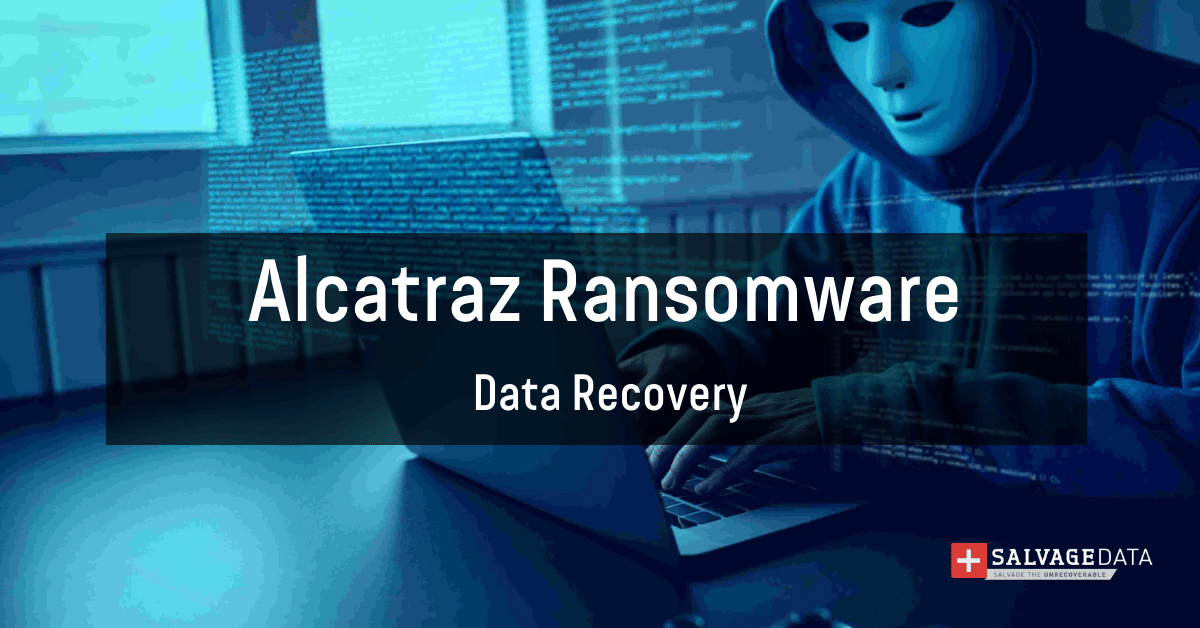Recent Articles
How To Recover Overwritten Files
The Snowflake Data Breach: A Comprehensive Overview
Mac Not Recognizing External Hard Drive: Quick Fix Solutions
How Multi-Cloud Backup Solutions Can Prevent Data Disasters
Capibara Ransomware: What is it & How to Remove
What Should a Company Do After a Data Breach: The Ticketmaster Incident
Secles Ransomware: Removal Guide
What To Do When Your Chromebook Freezes
How to Create Hyper-V Backup
What Is The Best Data Recovery Software For PC

I think there's an issue with my storage device, but I'm not sure Start a free evaluation →
I need help getting my data back right now Call now (800) 972-3282
What is Alcatraz Ransomware?
Alcatraz ransomware is a file-encrypting virus that uses strong encryption algorithms to encode victims’ files. Alcatraz Ransomware is a dangerous computer infection that can cause permanent data loss. This virus encrypts users’ personal files and demands a ransom for the decryption key. Alcatraz Ransomware is a very harmful virus that can cause serious problems for its victims. This malware encrypts the victim’s personal files and then demands a ransom for the decryption key. Alcatraz Ransomware is a dangerous computer virus that can cause permanent data loss.
History
Alcatraz ransomware is a file-encrypting virus that was first seen in the wild in February 2017. Alcatraz Ransomware is believed to be a variant of the HiddenTear ransomware.
The biggest attack Alcatraz ransomware has been spotted in is the WannaCry outbreak that started on May 12, 2017. Alcatraz ransomware was used in a campaign that targeted victims in Asia, specifically South Korea.
How does Alcatraz Ransomware work?
After encrypting the victim’s files, Alcatraz ransomware demands a ransom for the decryption key. Attackers typically display the ransom demand in a text file named “README.txt” that is placed in every folder that contains encrypted files.
What type of files does Alcatraz Ransomware encrypt?
Alcatraz ransomware typically encrypts the following types of files:.doc, .docx, .xls, .xlsx, .ppt, .pptx, .pdf, .txt, .jpg, and .png.
What to do if it infected you with Alcatraz Ransomware?
If it has infected you with Alcatraz ransomware, we recommend that you do not pay the ransom. There is no guarantee that you will get your files back even if you pay the ransom.
Instead, we recommend that you use a reputable anti-malware program to remove Alcatraz ransomware from your computer and then try to restore your files from a backup.
How to protect yourself from Alcatraz Ransomware?
To protect yourself from Alcatraz ransomware, we recommend that you use a reputable anti-malware program and keep your operating system and software up-to-date.
You should also create regular backups of your important files to an external hard drive or cloud storage service. This way, if you do get infected with Alcatraz ransomware, you will be able to restore your files from the backup.
Is there a public decryption tool available for Alcatraz Ransomware?
Yes, the Alcatraz Decryptor can be downloaded from here: Alcatraz Decryptor. But, keep in mind that this tool is not 100% effective and may not work in all cases. Anyway, it’s worth a try if you want to attempt to decrypt your files without paying the ransom.
Use a recovery software
You can always try data recovery software to restore your data. SalvageData data recovery software is built to help you.
Contact a data recovery service
If you don’t feel comfortable recovering your files on your own, you can contact a data recovery service.
SalvageData ransomware data recovery team will decrypt your files and guarantee it is restored. Contact now SalvageData experts to learn more and get help.













